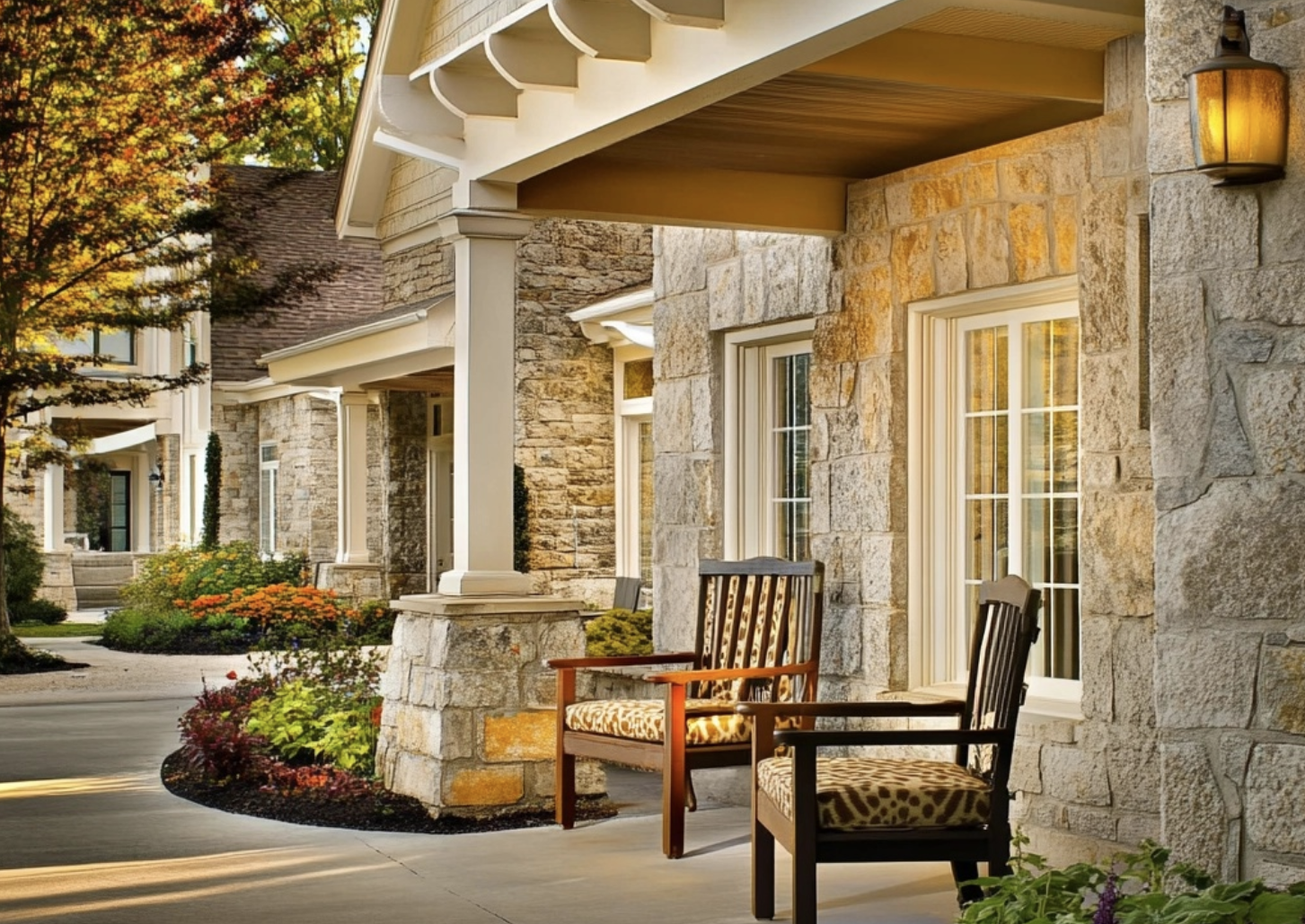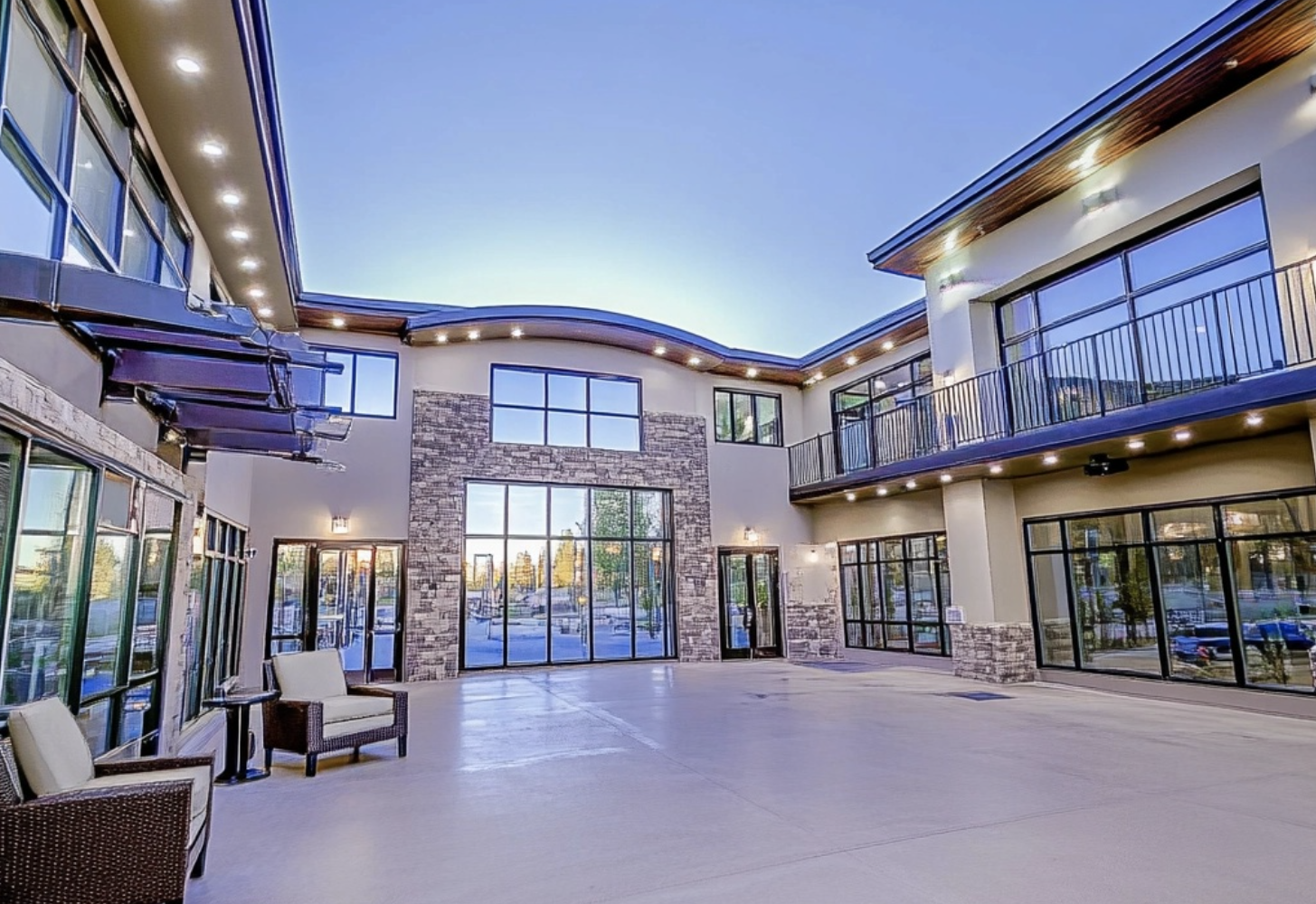For many seniors living on fixed incomes, finding safe and affordable housing can be a daunting challenge. In Florida, where the cost of living continues to rise, low income senior housing options are in high demand. But exactly how much does subsidized housing for seniors cost in the Sunshine State?
This article will provide a comprehensive overview of low income senior housing in Florida. It will cover the criteria used to define “low income” for seniors, the specific requirements in Florida, and the various financial assistance programs available, such as rental assistance, tax credits, and public housing. The guide will also explore the different types of subsidized housing options for seniors, including senior apartments and affordable senior living communities. Additionally, it will address some of the common challenges faced by low income seniors seeking housing and provide helpful resources and tips for navigating the complex world of senior housing assistance in Florida.
Understanding Low Income Criteria for Seniors
The term “low income” is often used to describe individuals or households whose income falls below a certain threshold. For seniors, being classified as low income can significantly impact their eligibility for various assistance programs, including housing support. To determine whether a senior qualifies as low income, two main measures are typically used: the Federal Poverty Guidelines and the Area Median Income (AMI).
The Federal Poverty Guidelines, also known as the Federal Poverty Level (FPL), are issued annually by the U.S. Department of Health and Human Services (HHS). These guidelines establish a minimum income level below which an individual or family is considered to be living in poverty. For 2023, the poverty guideline for a single-person household is $14,580 per year. This means that a senior living alone with an annual income below this amount would be classified as low income under the Federal Poverty Guidelines.
Another commonly used measure for determining low income status is the Area Median Income (AMI). AMI is calculated by the U.S. Department of Housing and Urban Development (HUD) for each metropolitan area and non-metropolitan county in the United States. It represents the midpoint of a region’s income distribution, with half of the households earning more than the median and half earning less.
HUD defines low income households as those earning less than 80% of the AMI, very low income households as those earning less than 50% of the AMI, and extremely low income households as those earning less than 30% of the AMI. These AMI-based income limits are used to determine eligibility for various housing assistance programs, such as public housing, Section 8 housing choice vouchers, and low income senior housing.
The table below shows the 2023 Federal Poverty Guidelines for the 48 contiguous states and the District of Columbia:
| Persons in Family/Household | Poverty Guideline |
|---|---|
| 1 | $14,580 |
| 2 | $19,720 |
| 3 | $24,860 |
| 4 | $30,000 |
| 5 | $35,140 |
| 6 | $40,280 |
| 7 | $45,420 |
| 8 | $50,560 |
For families/households with more than 8 persons, add $5,140 for each additional person.
It is important to note that while the Federal Poverty Guidelines remain constant across the contiguous United States, AMI-based income limits vary by location, as they are tied to the median income of a specific area. This means that a senior may be considered low income in one region but not in another, depending on the local AMI.
Understanding these low income criteria is crucial for seniors seeking housing assistance, as it helps them determine their eligibility for various programs designed to support low income individuals. By familiarizing themselves with the Federal Poverty Guidelines and the AMI-based income limits for their area, seniors can better navigate the complex landscape of housing assistance and access the resources they need to secure affordable, safe, and stable housing.
Florida’s Specific Criteria for Low Income Seniors
Florida has specific income and asset criteria for determining eligibility for various low income senior housing programs. The Florida Department of Children and Families (DCF) sets these limits based on the federal poverty level (FPL) and area median income (AMI).
Income Thresholds
- For Medicaid long-term care in Florida, the income limit for an individual is $2,742 per month in 2023.
- HUD publishes income limits for various Florida metropolitan and non-metropolitan areas annually. These limits are categorized as extremely low income (30% of AMI), very low income (50% of AMI), and low income (80% of AMI).
- For example, in the Miami-Miami Beach-Kendall, FL HUD Metro FMR Area, the 2023 income limits are:
| Persons in Family | 30% of AMI | Very Low Income (50% of AMI) | 60% of AMI | Low Income (80% of AMI) |
|---|---|---|---|---|
| 1 | $21,700 | $36,150 | $43,380 | $57,800 |
| 2 | $24,800 | $41,300 | $49,560 | $66,050 |
| 3 | $27,900 | $46,450 | $55,740 | $74,300 |
| 4 | $30,950 | $51,600 | $61,920 | $82,550 |
Adjustment for Family Size
The income limits are adjusted based on the number of persons in the household. Generally, the income threshold increases with each additional family member.
Annual Updates by HUD
HUD updates these income limits annually to account for changes in the area median income and the federal poverty level. The most recent income limits for Florida are available on HUD’s website and are used by various housing authorities and agencies to determine eligibility for low income senior housing programs.
It is crucial for low income seniors in Florida to stay updated on these annually published income limits to understand their eligibility for various affordable housing programs and assistance. Organizations like Florida Housing Finance Corporation provide detailed information on these income limits and how they apply to specific programs for low income seniors in the state.
Financial Assistance Programs for Low Income Seniors
Low income seniors in Florida have access to various financial assistance programs that can help them cover the costs of housing, healthcare, and nutrition. These programs are designed to support seniors who are struggling to make ends meet and ensure they have access to the resources they need to maintain their health and well-being.
Medicaid and Medicare
Medicaid and Medicare are two important government-funded healthcare programs that can provide significant assistance to low income seniors in Florida.
Medicaid is a joint federal and state program that provides free or low-cost health coverage to low income individuals, including seniors. In Florida, Medicaid offers long-term care options for eligible seniors, such as the Program of All-Inclusive Care for the Elderly (PACE) and the Statewide Medicaid Managed Care Long-term Care Program (SMMC LTC).
To be eligible for Florida Medicaid, seniors must meet specific income and asset limits. For example, in 2023, the income limit for an individual to qualify for Medicaid long-term care is $2,742 per month. Additionally, seniors must meet certain medical or functional need requirements to qualify for long-term care services.
Medicare, on the other hand, is a federal health insurance program designed for people age 65 or older, as well as some younger individuals with disabilities. Medicare can help cover the costs of hospital stays, medical services, and prescription drugs.
The Serving Health Insurance Needs of Elders (SHINE) program, operated by the Florida Department of Elder Affairs, provides free, unbiased Medicare counseling to help seniors understand their healthcare options and make informed decisions.
Supplemental Nutrition Assistance Program (SNAP)
The Supplemental Nutrition Assistance Program (SNAP), formerly known as the Food Stamp Program, is a federal program that provides nutrition assistance to low income individuals and families, including seniors.
In Florida, SNAP is administered by the Department of Children and Families (DCF). To be eligible for SNAP benefits, seniors must meet specific income and asset criteria. For example, a single-person household must have a gross monthly income of $1,383 or less to qualify.
Seniors can apply for SNAP benefits online through the DCF ACCESS website, by mail, or in person at a local DCF office. Once approved, benefits are provided on an Electronic Benefit Transfer (EBT) card, which can be used to purchase eligible food items at authorized retailers.
Housing Programs
There are several housing assistance programs available to low income seniors in Florida, including:
- HUD-funded rental assistance: The U.S. Department of Housing and Urban Development (HUD) provides funding for various rental assistance programs, such as public housing and Section 8 housing choice vouchers.
- USDA Rural Housing Service: This program offers loans and grants for repairs, modernization, or the removal of health and safety hazards in rural areas.
- Florida Housing Finance Corporation: This state agency provides affordable housing programs and mortgages for low income individuals, including seniors.
- Assisted living facilities and adult family care homes: The Florida Department of Elder Affairs maintains a directory of licensed assisted living facilities and adult family care homes that can provide affordable housing options for seniors.
Low income seniors can also seek assistance from local Aging and Disability Resource Centers (ADRCs), which can provide information and referrals to various housing programs and services.
By leveraging these financial assistance programs, low income seniors in Florida can access the support they need to secure affordable housing, healthcare, and nutrition, ultimately improving their quality of life and ability to age in place.
Identifying Eligible Housing Options
Low income seniors in Florida have several housing options available to them, including Section 202 Supportive Housing, the Housing Choice Voucher Program, and the Low Income Housing Tax Credit (LIHTC) Program. Each of these programs has specific eligibility criteria and application processes that seniors must navigate to secure affordable housing.
Section 202 Supportive Housing
The Section 202 Supportive Housing for the Elderly program helps expand the supply of affordable housing with supportive services for very low-income seniors aged 62 and older. This program provides funding to construct, acquire, or rehabilitate multifamily properties that serve very low-income elderly individuals.
To be eligible for Section 202 housing, at least one adult member of the household must be 62 years or older, and the household must make less than 50% of the Area Median Income (AMI) of the property’s location. Residents typically pay 30% of their adjusted income for rent, with the remaining costs covered by the federal government.
Interested seniors should contact the property owner or manager directly to apply, as HUD does not manage the leasing of Section 202 properties. The HUD Resource Locator can help seniors find Section 202 properties in their area by selecting the “Find Affordable Elderly and Special Needs Housing” option.
Housing Choice Voucher Program
The Housing Choice Voucher Program, also known as Section 8, is a federal program that assists very low-income families, the elderly, and the disabled in affording decent, safe, and sanitary housing in the private market. Participants use vouchers issued by local Housing Authorities (HA) to rent privately-owned apartments or houses from landlords approved by the HA.
Eligibility for the Housing Choice Voucher Program is determined by the local HA based on factors such as income, family size, and citizenship status. Generally, the family’s income may not exceed 50% of the median income for the county or metropolitan area in which they choose to live.
Due to limited availability, eligible families are often placed on a waiting list. Local HAs have established policies for opening, closing, selecting, and removing families from waiting lists, which are typically published online or in their offices. Seniors interested in applying should contact their local HA for more information on the application process and waiting list status.
Low Income Housing Tax Credit (LIHTC) Program
The Low Income Housing Tax Credit (LIHTC) Program encourages private investors to develop affordable housing through new construction, purchasing, and renovation of affordable rental housing for low income households. Developers receive tax credits from the IRS, which they can use to offset their tax liability or sell to investors to generate project equity.
To qualify for LIHTC housing, a family’s income must fall within the program’s limits, which are based on the Area Median Income (AMI) set by HUD each year. Rent for LIHTC units is also based on the AMI and does not increase or decrease based on an individual family’s income.
Seniors interested in LIHTC housing should contact the property owner or manager directly, as each development may have its own application process and waiting list. The Florida Housing Finance Corporation, which administers the LIHTC program in Florida, can provide additional information on local housing options and income limits.
By understanding the eligibility requirements and application processes for these various housing assistance programs, low income seniors in Florida can identify the options that best suit their needs and take steps to secure affordable, safe, and stable housing.
Challenges Faced by Low Income Seniors
Low income seniors in Florida face numerous challenges that can significantly impact their quality of life. One of the most pressing issues is the rising cost of healthcare. Many seniors live on fixed incomes, and the increasing cost of medical care, prescription medications, and insurance premiums can quickly deplete their limited resources. This often forces them to choose between paying for essential healthcare needs and covering other basic living expenses.
Another major challenge is the lack of affordable housing options for low income seniors. Florida’s population growth and popularity have driven up the cost of real estate, making it difficult for seniors to find suitable housing within their budget. The median single-family home price in Florida is now $413,000, with condos at a median value of $330,000 – a marked 7% increase since 2022. This leaves many seniors struggling to find safe, accessible, and affordable housing that meets their needs.
In addition to healthcare and housing costs, low income seniors also face challenges in covering daily living expenses. The cost of living in Florida has peaked, impacted by rising insurance rates, homeowners association fees, property taxes, and hurricane protection. Even the cost of groceries has inflated about 4 percent since 2022. These increasing expenses can make it difficult for seniors on fixed incomes to afford basic necessities like food, transportation, and utilities.
The combination of these challenges can lead to financial insecurity and a decreased quality of life for low income seniors in Florida. According to the Elder Index, developed by researchers at the University of Massachusetts-Boston, nearly 5 million older women living alone, 2 million older men living alone, and more than 2 million older couples have incomes that make them economically insecure. This means they struggle to afford basic necessities and are at risk of falling into poverty.
To address these challenges, it is essential for policymakers and community organizations to prioritize programs and services that support low income seniors. This may include expanding access to affordable healthcare, increasing the availability of subsidized housing options, and providing financial assistance for daily living expenses. By working together to address these issues, we can help ensure that all seniors in Florida have the opportunity to age with dignity and security.
Resources and Tips for Low Income Seniors in Florida
Low income seniors in Florida have access to a wide range of resources and assistance programs designed to support their well-being and financial stability. By navigating these programs effectively and utilizing community resources, seniors can improve their quality of life and manage their finances more efficiently.
Navigating Assistance Programs
The Florida Department of Elder Affairs administers various programs to assist low income seniors, including home and community-based services, nutrition programs, and health and wellness initiatives. To determine eligibility and apply for these programs, seniors can call the Elder Helpline at 1-800-96-ELDER (1-800-963-5337).
Some key assistance programs include:
- Community Care For the Elderly (CCE)
- Home Care for the Elderly (HCE)
- Medicaid Long-Term Care Services
- Supplemental Nutrition Assistance Program (SNAP)
- Emergency Home Energy Assistance Program (EHEAP)
Additionally, seniors can explore benefits programs for those with limited income and resources through the Benefits Check Up tool, which helps identify eligibility for various forms of assistance.
Community Resources
Florida offers a range of community resources to support low income seniors, such as:
- Senior centers and congregate meal sites
- Transportation assistance through the Florida Commission for the Transportation Disadvantaged
- Legal assistance and elder abuse prevention programs
- Serving Health Insurance Needs of Elders (SHINE) program for Medicare counseling
Seniors can also access valuable information and referrals through the Elder Helpline and local Aging and Disability Resource Centers (ADRCs).
Financial Planning
Effective financial planning is crucial for low income seniors to manage their limited resources. Some tips for financial management include:
- Creating a well-structured budget to prioritize spending and prevent overspending
- Taking advantage of senior discounts offered by various establishments, such as grocery stores, restaurants, and retail outlets
- Utilizing cost-effective resources, such as discounted transportation services, meal delivery programs, and free or low-cost health screenings
- Considering in-home care services as a cost-effective alternative to assisted living or nursing home expenses
Seniors can also seek assistance from financial planning resources, such as:
| Resource | Description |
|---|---|
| HUD-approved counseling agencies | Provide guidance on financial planning and housing issues |
| Making Home Affordable | Offers assistance with mortgage payments and foreclosure prevention |
| Legal assistance | Helps seniors navigate legal issues related to financial matters |
By leveraging these resources and implementing sound financial planning strategies, low income seniors in Florida can better manage their finances and maintain a higher quality of life.
Conclusion
The challenges faced by low income seniors in Florida are significant, but there are numerous resources and assistance programs available to support their well-being and financial stability. By understanding the eligibility criteria for low income senior housing and navigating the various financial assistance programs, seniors can access the support they need to secure affordable housing, healthcare, and nutrition. Community resources, such as senior centers, transportation assistance, and legal aid programs, further contribute to the quality of life for low income seniors in the state.
Ultimately, it is crucial for policymakers, community organizations, and individuals to prioritize the needs of low income seniors in Florida. By working together to address the challenges they face and ensure access to essential resources, we can create a more supportive and inclusive environment for all seniors to age with dignity and security. With the right combination of assistance programs, community support, and financial planning, low income seniors in Florida can overcome the obstacles they face and enjoy a higher quality of life in their golden years.
FAQs
Is There Affordable Housing Available for Seniors in Florida?
Yes, public housing programs are designed to offer affordable, secure, and decent rental accommodations for low-income families, seniors, and individuals with disabilities, ensuring the rent is within their financial means.
What Are the Average Costs of Senior Housing Options in Florida?
The cost for independent living facilities in Florida typically ranges between $1,500 and $4,000 monthly, covering rent, utilities, and access to various community amenities. For assisted living, the monthly expenses usually fall between $2,500 and $6,000.
What Criteria Must Be Met for Low-Income Housing Eligibility in Florida?
To qualify for low-income housing in Florida, a family’s income must be within certain limits relative to the area’s median income, adjusted for family size. Families earning at or below 30% of the area median income are considered extremely low-income, while those earning at or below 50% are categorized as very low-income.
Who Is Eligible for Senior Living Facilities in Florida?
Individuals aged 65 and older are eligible for senior living facilities in Florida if they require assistance with four or more activities of daily living, such as bathing, toileting, or grooming. Those who may not need such extensive assistance but have been diagnosed with Alzheimer’s or other progressive conditions may also qualify.












